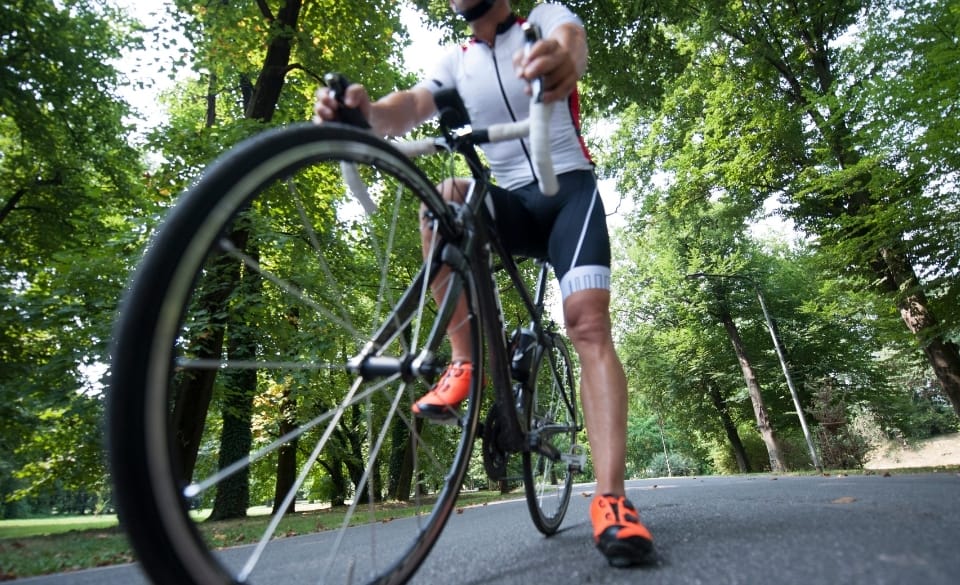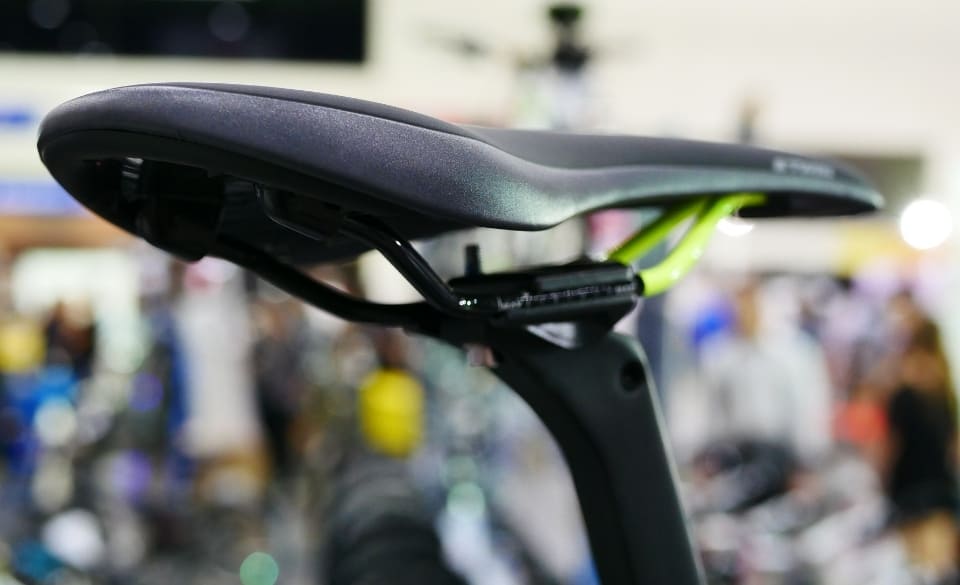
Saddle Setback – UPDATED 2021 – Understanding Bike Saddle Offset
Page Contents
Saddle setback or commonly know as saddle fore-aft, refers to the position of the saddle in relation to the bottom bracket. Both setback and offset are important factors when it comes to your position on the bike and can affect both comfort, balance, and power.
In this article, we look at saddle setback and bike saddle offset. Showing you why both of these measurements are vital for a good position on the bike.
Saddle Setback – A Complete Guide
Saddle setback is one of the most important aspects of a good bike fit. The saddle setback is measured by the distance between the center of the bottom bracket and the front of the saddle. This ultimately controls where your weight will be located on the bike and how much upper bodywork is needed to stabilize the body under load.
The most common form of setting saddle setback is by using the KOPS method. The KOPS (knee over pedal spindle) sets your setback by aligning your knee with the pedal spindle. While this may put you in the ball pack of saddle position, often it sets the rider too far forward. Placing more weight on the handlebars and using more upper body to stabilize the body under load.
Instead of using the above method, try focusing on weight and stability rather than knee position over the pedal axle. Sitting slightly behind this measurement will allow a more stable pelvis and prevent excess load on the arms, shoulders, and neck. It will also help reduce numbness of the hands by shifting your weight further back on the bike.
You can test this methodology by placing your hands in the drops while pedaling at a steady power. Then by removing your hands and placing them behind you. You should be able to hold that position for at least 5-8 secs before falling forward. Anything shorter and you have too much weight on the front of the bike.

Understanding Bike Saddle Offset
Bike saddle offset is similar to saddle setback, although offset or “layback” comes from the seat post rather than adjustment of the saddle.
Bike saddle offset can range from 0 mm to 45 mm and is often used when riders with longer femur’s need to get further behind the bottom bracket. Using a saddle with more offset will allow greater adjustment behind the bottom bracket.
However, for most riders under 180cm, no special saddle offset is needed. This means most seat posts will allow you to position yourself with the correct saddle setback.
If you are above 180cm or have long femur’s you may need more offset in your seat post. This will allow you up to 10cm + behind the bottom bracket. While this is not such a common distance, there are still quite a few people with that fore-aft measurement.
Adjusting Bike Saddle Fore & Aft
There are a couple of important points when adjusting the bike saddle fore and aft.
Firstly make sure when adjusting your saddle fore-aft backward on the saddle rails that you lower your saddle height a small amount. Because by moving your saddle further back, you are effectively increasing your reach to the pedals. Secondly, if you are moving the saddle forward on the rails, you are doing the opposite and effectively lowering your saddle height.
This can all be seen through your knee angle. the further back you sit the steeper the knee angle will become and vice versa.
How To Set Up Road Bike Saddle Position?
If you are wondering how to set up your road bike saddle position, first set up a starting point. This is where the KOPS method can help you set up a temporary road bike saddle position and then allow you to fine-tune it by testing your balance on the bike.
To set up your road bike saddle position:
1. Set your bike up on an indoor trainer
2. Take the KOPS measurement. Do this by using a plumb line and measuring from the front of the knee to the pedal spindle.
3. Adjust your saddle fore-aft until the plum line aligns with the pedal spindle.
4. Place your hands in the handlebar drops
5. Pedal at a steady effort of 150-250w
6. Remove hands from the drop and count until you feel you fall forward towards the handlebars.
If the time is less than 5 seconds, move your saddle backwards by 2-4mm and repeat 4-6 again. If your time was longer than 10 seconds, move your saddle forward slightly (2-4mm) and follow steps 4-6 again.
You should then end up with a saddle position that ultimately keeps you stable for 5-8 seconds before you feel like you want to fall forward.
This will help you remove excess weight from the front of the bike and place more weight on the pelvis. Thus allowing you to hold a more stable upper body position and reduce the chances of numb hands, sore arms, shoulders, and neck.
Please note, this is just a general basic way to adjust your road bike saddle position. If you are experiencing sit bone pain while cycling, no power in the legs while cycling or generally feel uncomfortable with the position you are in, speak with a qualified bike fitter.
They will be able to diagnose your problems and have you sitting in the correct position.



